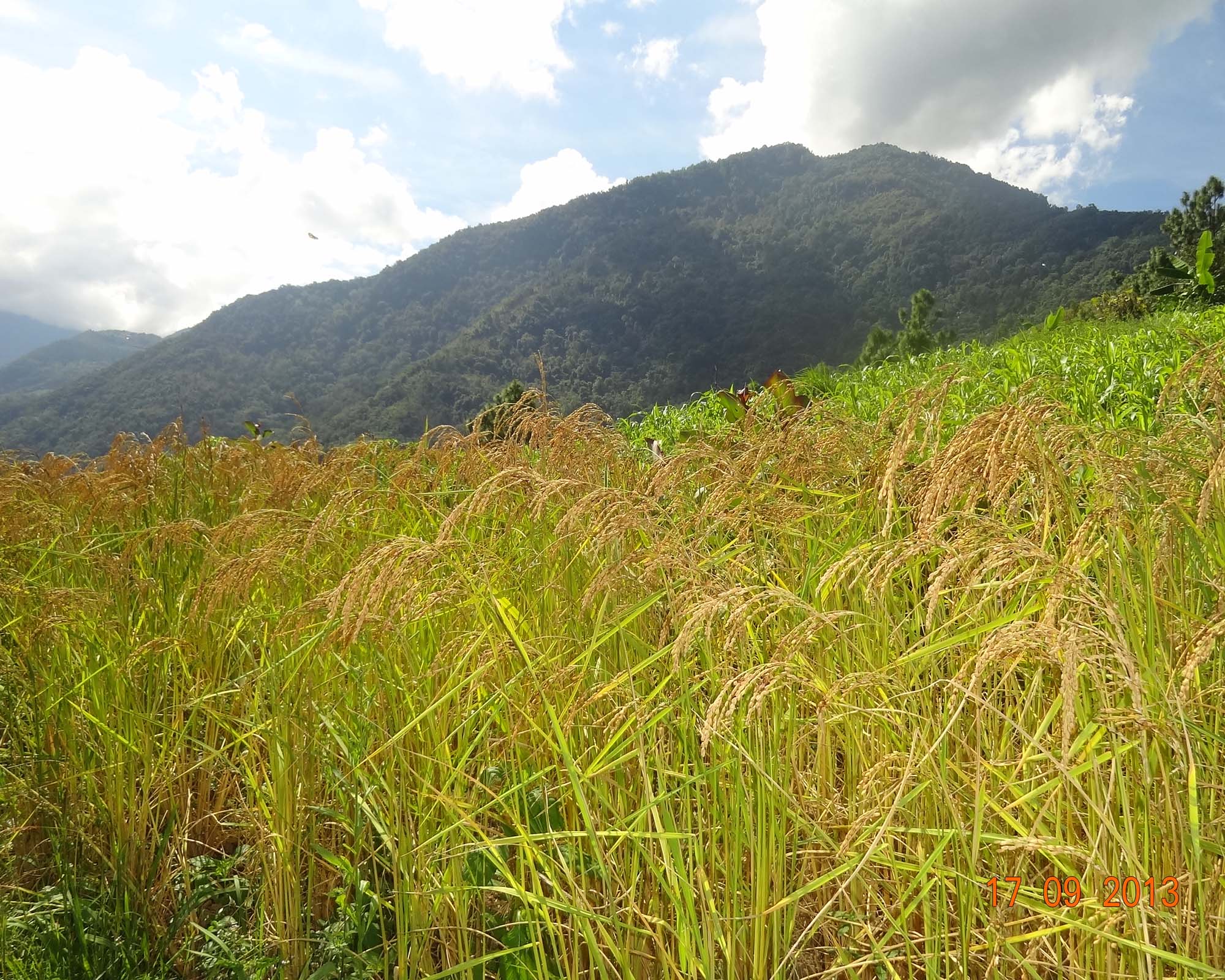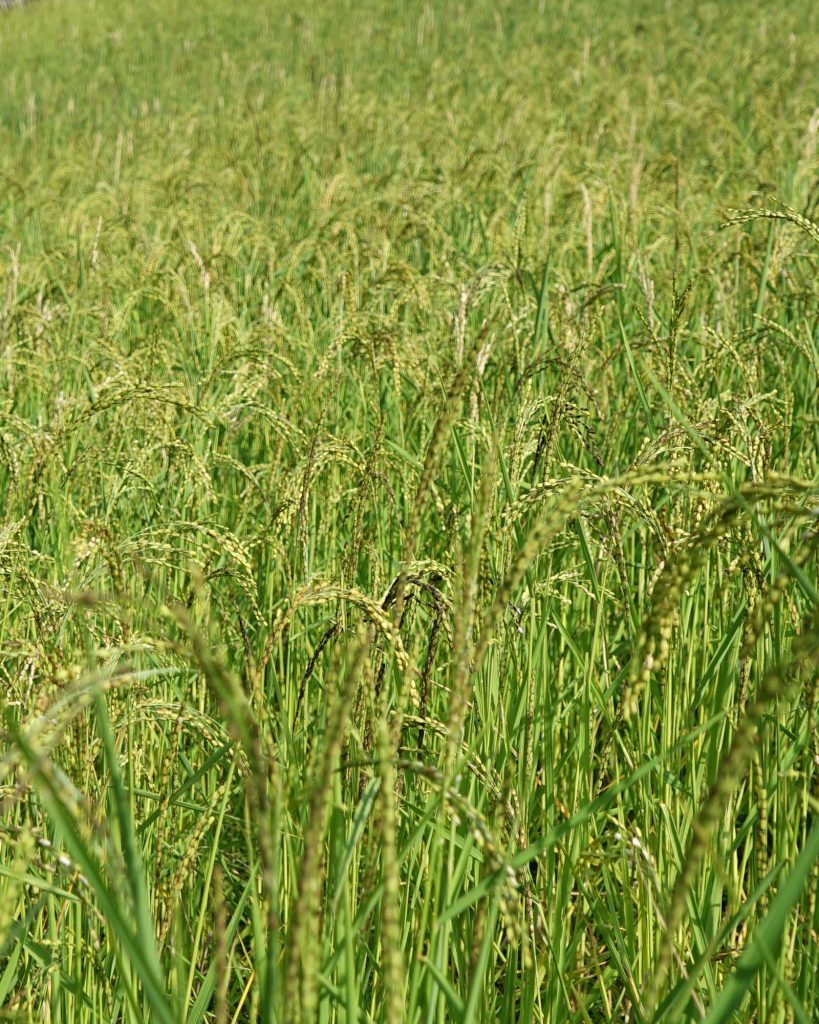Strengthening Resilience To Climate Change Impacts On Food Security Through Upland Paddy In Climate-Smart Villages

Strengthening Resilience to Impact of Climate Change on Food Security through Upland Paddy in Climate-Smart Villages
Tshetrim Gyeltshen, ARDSC Khangma and Tshering Choden, ARDC Wengkhar
Water scarcity is the most common impact of
climate change on agriculture in Bhutan. In most remote villages, farmers do
not have sufficient drinking water, let alone for irrigation. This has forced
resource-poor smallholder farmers to rely on rain for agriculture.
Rice is the staple cereal in Bhutanese food culture and also it is one of the crops most impacted by water scarcity. It has a great threat to household rice self-sufficiency. Therefore, there is a need to find a way to mitigate the impact of climate change and ensure rice self-sufficiency.
In this regard, efforts are being made to reduce the impact of climate change on rice production by promoting drought-resistant upland paddy, which requires less water as compared to wetland paddy. Therefore, intensification of upland paddy cultivation could help ensure household rice self-sufficiency through enhanced rice productivity. The cultivation of upland paddy offers farmers, especially those living at higher altitudes (> 1800 m above sea level), the opportunity to diversify their conventional maize-based cropping system and grow rice in their area.

Upland Paddy Cultivation in Climate-Smart Villages (CSVs)
The intervention was implemented in vulnerable communities, which have limited capacity to adapt to the impacts of climate change. Farmers without wetlands, with a shortage of irrigation water, or with unreliable sources of irrigation, and steep land benefit greatly from growing upland paddy. Upland paddy has ensured household self-sufficiency in rice in remote communities.
Dechen Zangmo, one of the farmers of Climate-Smart Villages in Bongman, Khar gewog, Pemagatshel Dzongkhag, is one of the farmer growing upland paddy.
She said, “Although my field is very steep to use a power tiller, growing upland rice helped my family, especially during the pandemic as I did not have to buy imported rice.”
Like Dechen, other CSV farmers produced rice for their consumption without having to buy it, especially during the pandemic COVID-19 when access to stores was difficult. According to the Gewog agricultural extension supervisor, farmers were able to grow plenty of upland paddy and were self-sufficient despite minimal losses from wildlife.
"We have not grown rice since childhood, we have no wetlands. This is the first time we are hearing about upland paddy and the first time we are growing it. Growing upland paddy in our village has helped our community a lot to meet our needs."

"Cultivating upland paddy was a real blessing for me in this (pandemic) difficult situation. I did not have to buy rice and could save money instead. From now on, I will continue growing upland paddy,"

Jamtsho, Tshogpa of Maan village under Zobel
gewog shares that he reduced his purchase of imported rice because he could
produce enough for his household. He says he did not have to spend more on rice
which was very expensive during the pandemic. He did not have to worry about
buying rice from the shops during the pandemic.
Intensification of upland paddy in the eastern
dzongkhags of Bhutan is supported by CARLEP-IFAD. Under the programme, more
than 100 hectares of land have been brought-in for upland paddy cultivation,
which has benefited smallholder farmers to become self-sufficient in food. Over
the years, the cultivation of upland paddy has become more prevalent in the
programme areas.
[Extracted from Stories of Change IV Issue]

